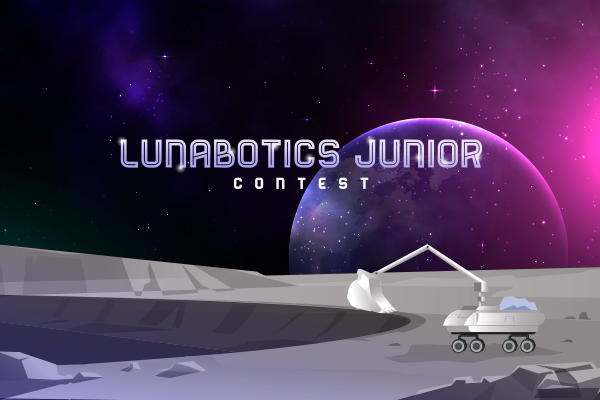Lunabotics Junior Contest

NASA Lunabotics Junior Contest – Design Moon Digging Robots
NASA seeks young engineers to help design a new robot for an excavation mission on the Moon. The Lunabotics Junior Contest, open to K-12 students in U.S. public, private, and is accepting entries on until Jan. 25, 2022. The competition, which is a collaboration between NASA and Future Engineers, asks students to design a robot that digs and moves lunar soil called regolith from an area of the lunar south pole to a holding container near a future Artemis Moon base.
NASA’s Artemis missions are returning to the Moon with the first woman and first person of color and will create a long-term human presence that will serve as a springboard for future Martian exploration. Lunar regolith is instrumental in this development, and could be used to create lunar concrete, reducing the amount and cost of materials that need to be transported from Earth. The Lunabotics Junior Contest creates a unique opportunity for a diverse group of students to contribute to NASA’s work in exploration and discovery while celebrating their creativity and innovation.
Registration and Who Can Enter
- Students can register individually, or teachers can register their entire class at: https://www.futureengineers.org/lunaboticsjunior
- The contest is open to K-12 students who attend schools in US states/territories + schools operated by the US for American personnel overseas.
Entry Details
- To enter the contest, students must submit by Jan. 25, 2022, an image of the robot design and a written summary that explains how the design is intended to operate on the Moon. While students are not tasked to actually build a robot, they are asked to envision a robot design that is no larger than 3.5 feet by 2 feet by 2 feet and addresses three main design features:
- how the physical design of the robot will enable it to scoop/dig and move the lunar regolith
- whether the robot will operate by moving large amounts of dirt per trip or transporting less dirt in more trips
- how the design and operation of the robot will meet the big challenge of lunar dust that is stirred up and can “stick” to surfaces when lunar regolith is moved.
Prizes
- Winners will be announced on or about March 29, 2022. Ten semifinalists will receive a Lunabotics Junior prize pack and four national finalists from each category will win a virtual session with a NASA subject matter expert. The national winner from each category will be awarded a virtual chat for their class with Kennedy Space Center Director, Janet Petro.
Sign up for the Contest: https://www.futureengineers.org/lunaboticsjunior
Sign up to be a Volunteer Judge: https://www.futureengineers.org/registration/judge/lunaboticsjunior
Read more about Lunar Regolith: https://www.nasa.gov/feature/glenn/2021/dust-an-out-of-this-world-problem
Check out NASA’s RASSOR: https://technology.nasa.gov/patent/KSC-TOPS-7

